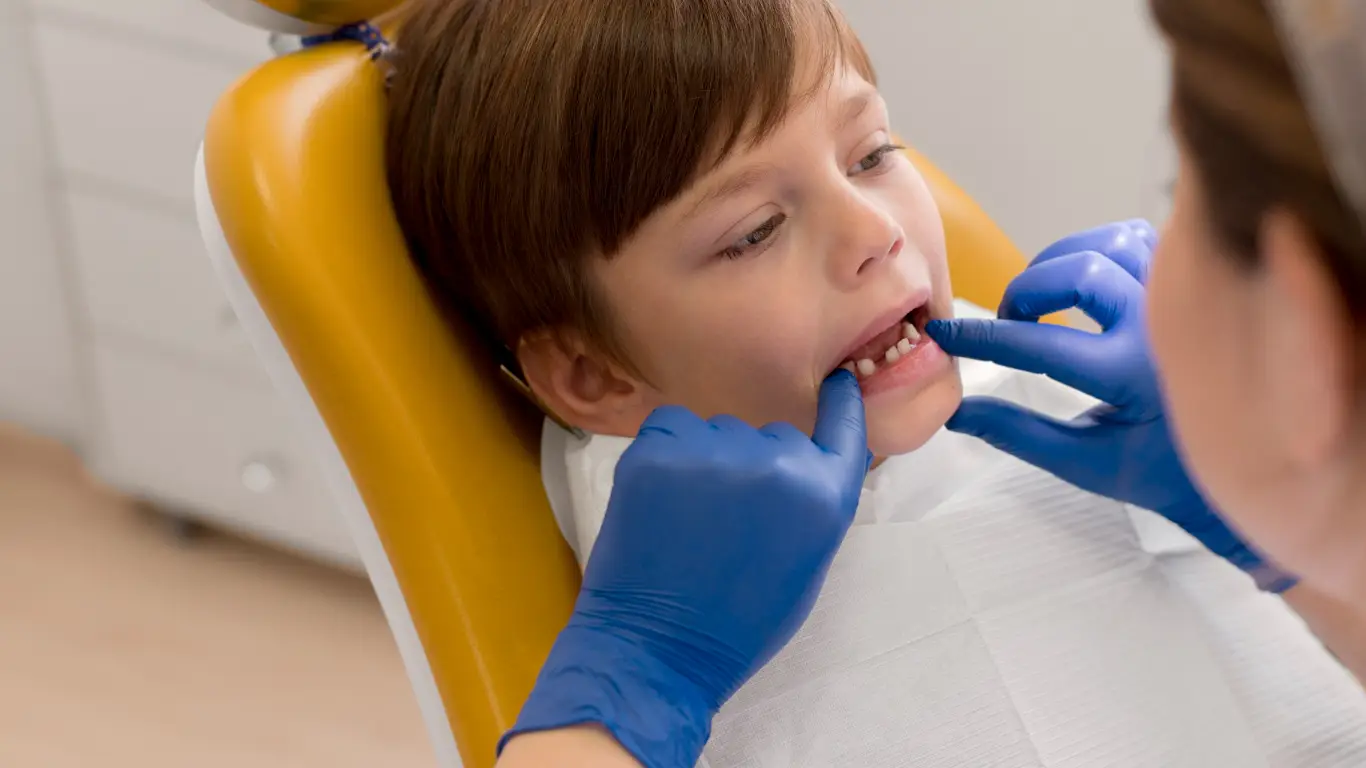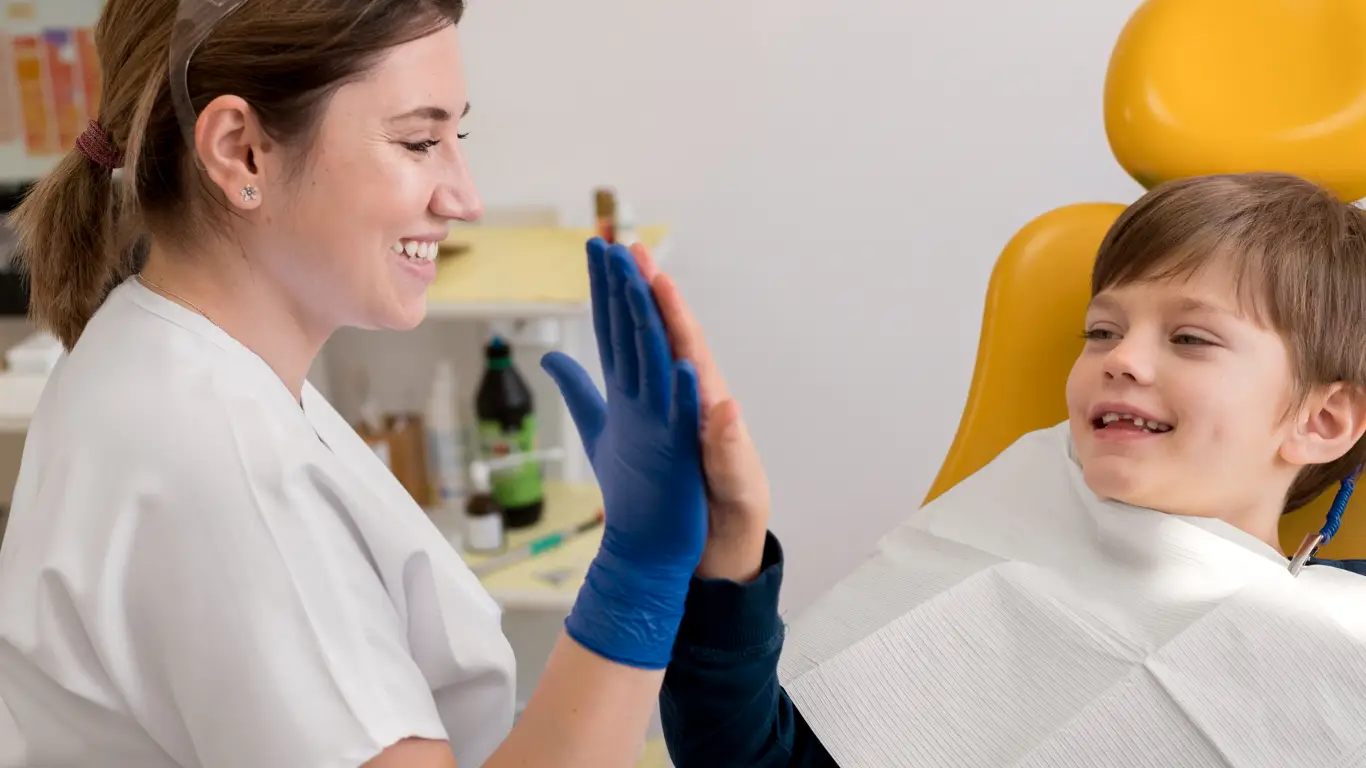Phase I Orthodontic Treatment Before Braces
Phase I treatment before braces is often the key to setting the stage for a lifetime of healthy smiles. Your little girl comes home from school with her class photos, and as you flip through the pictures, you notice something familiar — she has her father’s teeth. You know that eventually, she will need orthodontic treatment, but she’s still quite young and has only lost a few baby teeth so far. So, what should you do? Should you simply wait until all her adult teeth have come in and hope for the best?
Many parents don’t realize that the ideal time for a child to see an orthodontist is no later than age seven. By this age, your child’s jaw has typically developed enough for an orthodontist to evaluate how the adult teeth are likely to align. This early evaluation is crucial because it allows for Phase I orthodontics — a proactive approach to orthodontic treatment designed to address potential issues early on. Phase I orthodontic treatment can guide the growth of your child’s jaw and teeth, helping to create a healthy, beautiful smile long before traditional braces become necessary.
Phase I Treatment Before Braces
If you’re wondering whether to wait until all your child’s adult teeth have come in before starting orthodontic care, here’s why early orthodontic treatment — also known as pre braces treatment or Phase I orthodontics — can make a big difference.
Starting with early orthodontics gives your child the chance to benefit from gentle interventions that guide jaw growth and tooth alignment before full braces or other treatments become necessary. This early approach often means later braces are simpler, shorter, or sometimes even avoidable.
During this important first phase, common orthodontic treatments might include appliances that gently shape the jaw or help stop harmful habits like thumb sucking. Plus, Phase I orthodontic treatment lays the groundwork for future options like early braces or even Invisalign Teen when your child is ready.
Read More: Orthodontic Treatment Before and After
Some of the key benefits of beginning early include:
Preventing or catching developing bite problems before they get worse
Reducing the need for extractions or more invasive procedures later on
Guiding permanent teeth into better positions for a healthier smile
Improving appearance and boosting your child’s confidence
Keep in mind, early braces aren’t always needed right away — sometimes the goal of Phase I orthodontics is simply to prepare for future treatment and avoid complicated corrections down the road.
If you’re unsure about the timing or which treatments might be best for your child, Dr. Mir and his team are here to guide you every step of the way with personalized care plans tailored to your family’s needs.

In Summary:
The first phase, Early Treatment, is designed to:
- Enable correct biting and chewing
- Correct harmful oral habits
- Prevent a problem from developing
- Intercept a developing problem
- Guide the growth of the jaw bones that support the teeth so the teeth come in straight and the jaw grows in the correct alignment
- Guide permanent teeth into a more favorable position
- Create a more pleasing arrangement of teeth, lips and face
- Establish long-term stability; the teeth remain where they are supposed to stay
- Improve appearance
Read More: Orthodontist for Kids

The Benefits of Early Orthodontic Treatment by a Certified Orthodontist
- A better prognosis for how the permanent teeth will develop
- The ability to correct any habits that may be the cause of development problems, such as thumb sucking or tongue pushing
- Correcting bite problems like an open bite, crossbite or deep bite
- The ability to guide the growth of the jaw to accommodate emerging teeth
- The ability to improve your child’s appearance
- Creating a more pleasing and functional arrangement of teeth, lips and face
- Alleviating future, and possibly more invasive, dental correction
- Increasing self-esteem and confidence in your child
Now you know there is something that can be done before braces are needed. Take matters into your own hands and let Dr. Mir and his team assist you and your family. Call our office at 289 588 8747 to book your FREE CONSULTATION!
Read More: Kid Dental Clinic
FAQs for Phase I Treatment Before Braces
It’s recommended that children have their first orthodontic evaluation by age 7. At this stage, early orthodontic treatment can be most effective because the jaw and teeth are still developing. An orthodontist can identify potential issues early on and decide if your child needs pre braces treatment or phase I orthodontics. This early check-up helps prevent serious problems and allows for better planning of future orthodontic treatments.
Phase I orthodontics refers to the initial stage of treatment designed to correct bite problems and guide jaw growth before all adult teeth have come in. This early intervention often involves using early braces or specialized appliances that gently influence the teeth and jaw. The goal is to create space and alignment that will make future treatments, like traditional braces or Invisalign Teen, easier and more effective.
Starting early orthodontics offers several advantages: it can correct harmful oral habits, prevent more severe bite issues, and guide permanent teeth into better positions. Early treatment often reduces the complexity and duration of later orthodontic treatments. Additionally, it improves your child’s facial symmetry and boosts self-confidence by enhancing their smile early on.
Waiting until all adult teeth have erupted before starting orthodontic care can limit treatment options. Without early orthodontic treatment or pre braces treatment, your child might face longer, more invasive procedures later. Problems like jaw misalignment or severe crowding may become harder to fix, sometimes requiring surgery or tooth extractions.
Common early orthodontics approaches include appliances like palatal expanders (RPE) that widen the jaw, habit-breaking devices that stop thumb sucking, and early braces designed for young patients. As your child grows, options like Invisalign Teen become available, offering a discreet alternative to traditional braces. Your orthodontist will recommend the best orthodontic treatments based on your child’s unique needs.
Most children adapt well to early orthodontic treatment. While some discomfort may occur after adjustments, it’s usually mild and temporary. Modern early braces and appliances are designed for comfort, and orthodontists take care to minimize any difficulties during treatment. This makes pre braces treatment a positive experience that sets your child up for a healthy smile.
The duration of phase I orthodontics typically ranges from 6 to 12 months. After this initial phase, there may be a resting period before more comprehensive treatment begins, such as full braces or Invisalign Teen. Early treatment is about setting the foundation, so your child’s mouth is ready for future alignment and bite correction.
While early orthodontics can reduce the need for extensive treatments later, it doesn’t always eliminate the necessity of braces entirely. Many children will still require early braces or Invisalign Teen after phase I orthodontics. However, early intervention can shorten treatment time and improve outcomes, making the entire orthodontic journey smoother.
Costs for early orthodontic treatment vary depending on the complexity of the case and specific orthodontic treatments used. Some insurance plans cover part of the cost, especially if treatment starts early. Many orthodontic offices offer payment plans to make pre braces treatment more affordable. It’s best to discuss financial options with your orthodontist during your consultation.
Invisalign Teen is a popular alternative to traditional braces for older children and teens. It uses clear, removable aligners to straighten teeth discreetly. This treatment is often recommended after phase I orthodontics or when all adult teeth are present. Invisalign Teen offers the benefits of improved aesthetics and easier oral hygiene during orthodontic care, making it a great option in the later stages of treatment.
